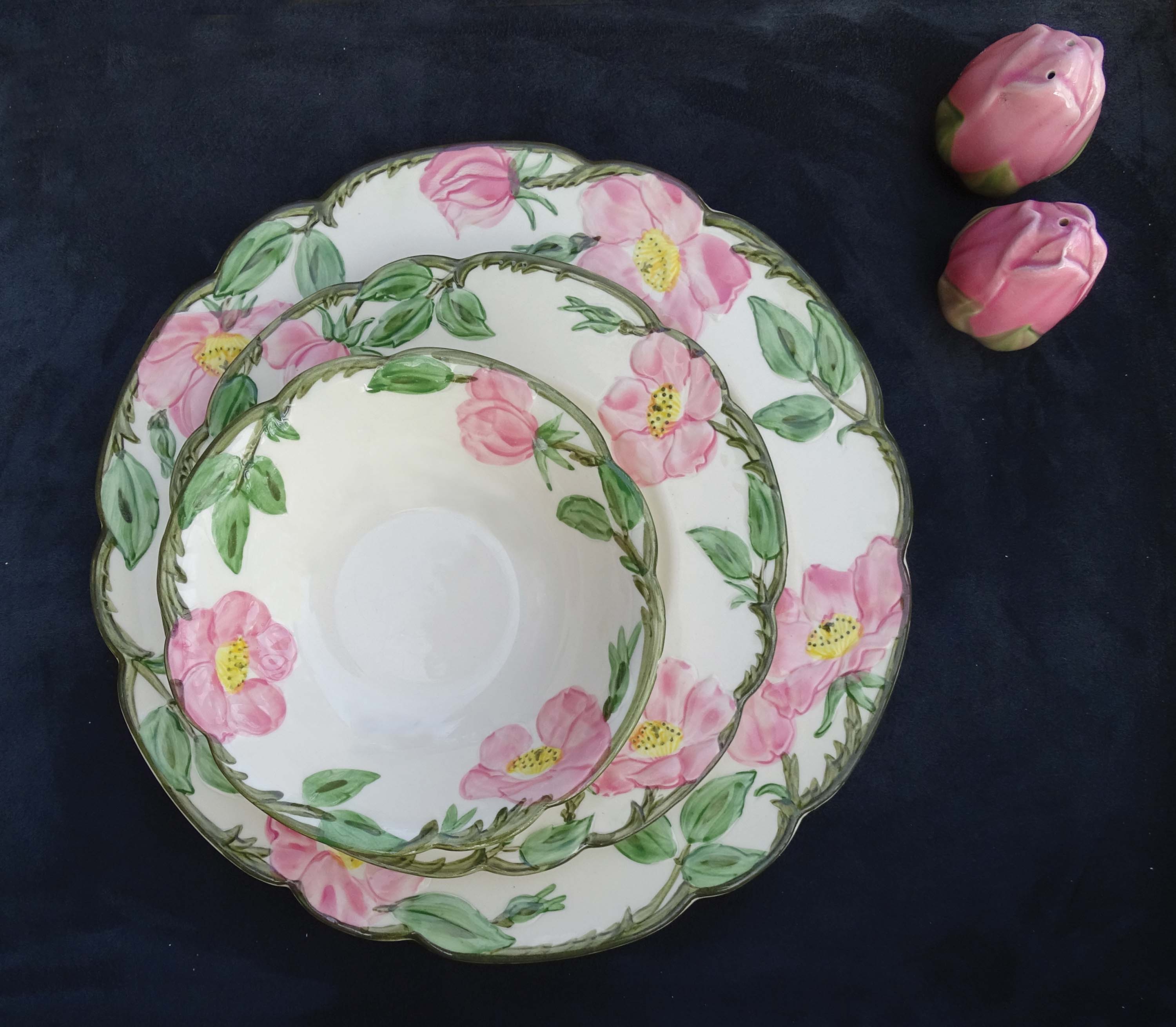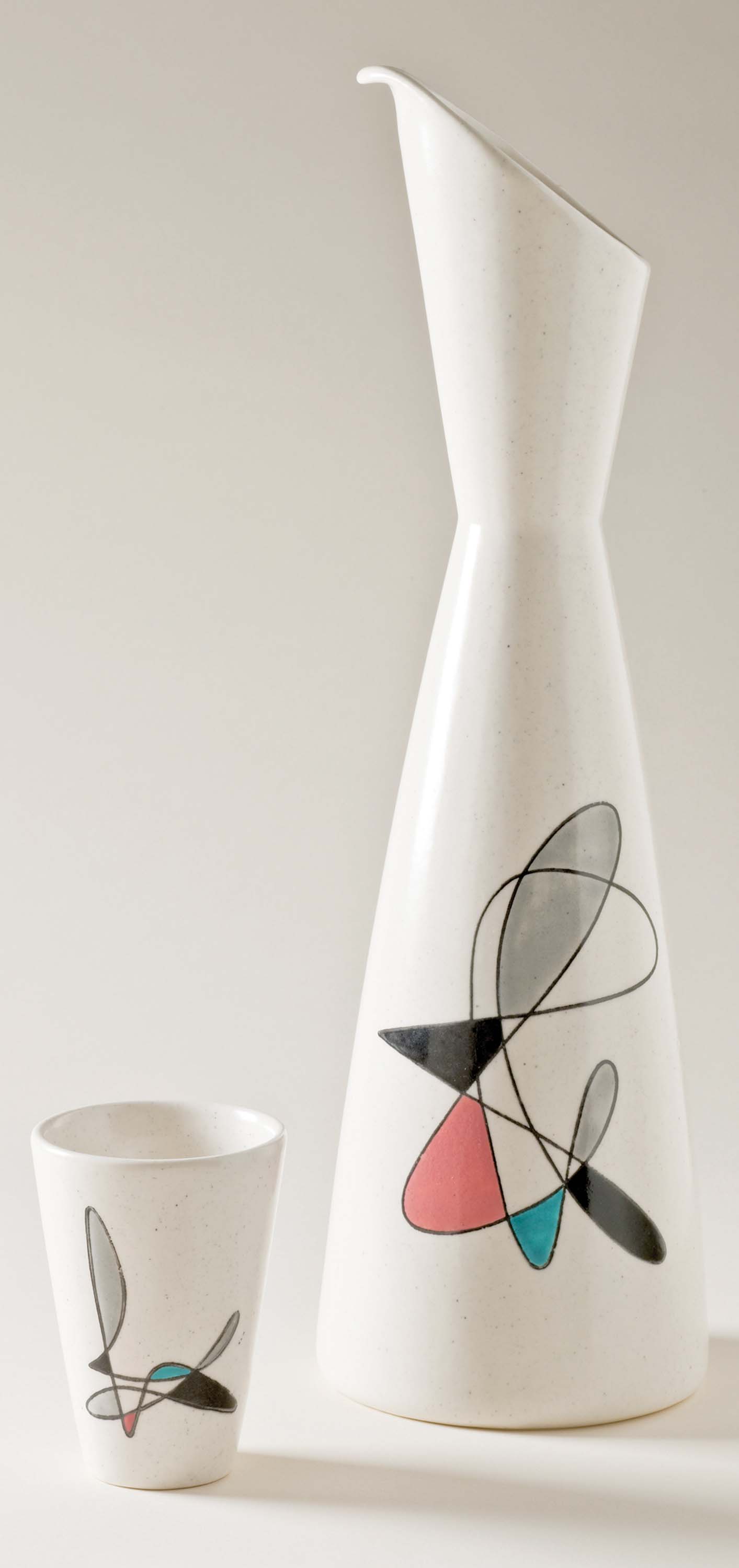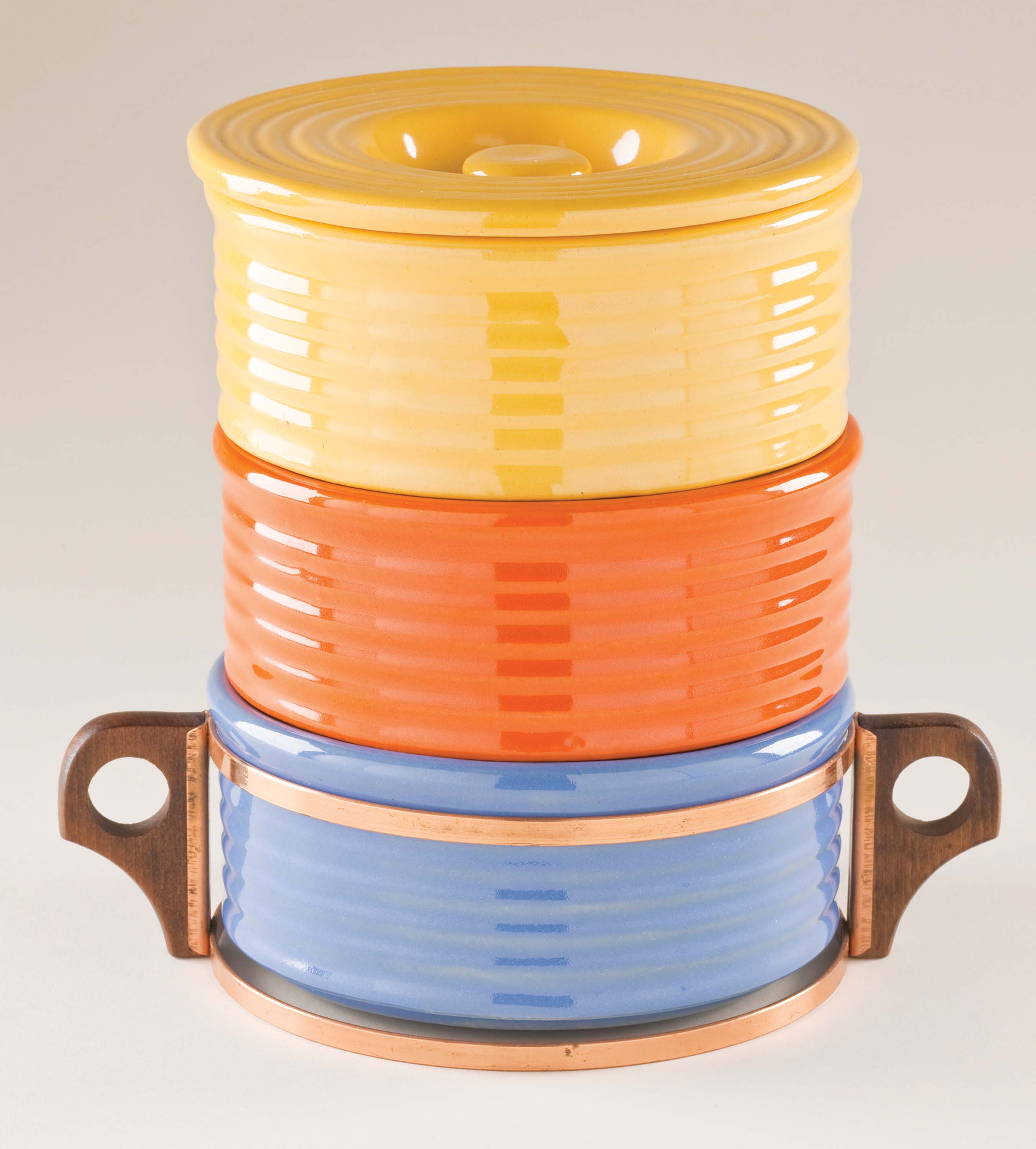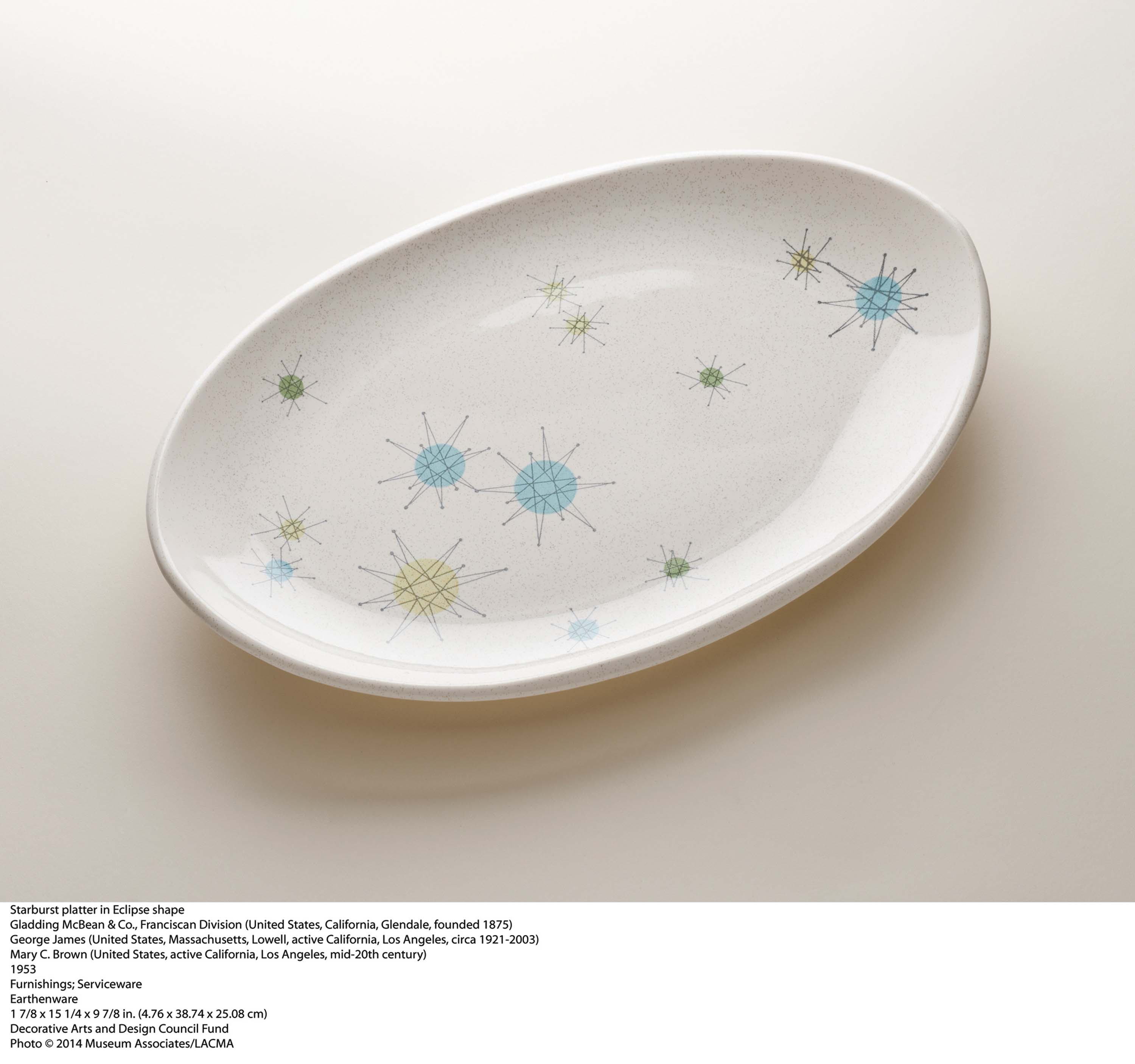
19 Oct California Clay
IN THE 1930s, AS THE NATIONAL SANK INTO THE GREAT DEPRESSION, California potteries suddenly began producing lines of affordable, sturdy tableware in exuberant, carefree colors that seemed to defy the general mood. They were met with tremendous success: People fell in love with the colors and the way they could be mixed and matched. Led by J.A. Bauer Pottery — which began manufacturing the California Colored Pottery line in 1930 and in 1933 created the eternally popular Ringware line — a group of Los Angeles-area potteries began billing themselves as the “Big Five.” They were Bauer; Gladding, McBean & Co. (Franciscan and Catalina Pottery); Pacific Clay Products (Hostessware); Vernon Kilns (Early California); and Metlox Manufacturing Company.
Companies on the East Coast quickly followed suit and in 1936 West Virginia-based Homer Laughlin China Company’s Fiesta line became so popular that the Big Five’s efforts to expand production to eastern states were doomed.
Most of the Big Five produced tableware, art pottery and figurines into the midcentury — with a break during World War II, when everyone turned to the war effort. Only Pacific Clay Products failed to resume making tableware and art pottery after the war, but the other four companies added even more colors and expanded their patterns. Bauer started producing Speckleware.
Bauer was founded in 1910 after J.A. (Andy) Bauer, who’d been manufacturing in Kentucky, moved to Los Angeles for his health and began producing gardenware and vases for florists. The Arts and Crafts movement influenced the designs, and those elegantly simple Rebecca vases hand-thrown by Matt Carlton (who worked for Bauer from 1915 to 1946) are worth thousands of dollars today. Over the years, Bauer produced designs by many notables, including Russel Wright.
But it’s the colorful Ringware that started driving collectors wild in the 1980s. Before the age of eBay and Etsy, collectors obsessively combed through garage sales, flea markets and Goodwill. Soon collectors opened shops featuring mint-condition California pottery at hefty prices. A large number of Bauer pieces bore no maker’s marks, and it was easy for neophytes to be perplexed. The company ceased manufacturing in 1962, but in 1998 Janek Boniecki bought the trademark and began making reproductions. The new line, however, is referred to as Bauer 2000, so collectors can avoid confusing the new works with vintage pieces. Another notable Los Angeles potter was Gladding, McBean & Co., founded in 1875 (and still operating as ‘Gladding, McBean,’ though it no longer produces art pottery or dinnerware). The company was known initially for its tiles that adorned the grand old Moorish-fantasy movie houses of the 1920s and clad the exteriors of landmark Art Deco buildings, including the Eastern Columbia building in Los Angeles, so often seen in films and television. In 1934, Gladding, McBean & Co. introduced its Franciscan line, featuring the brightly colored El Patio dinnerware. Seven years later, it added the famed Desert Rose and Apple patterns.
Los Angeles interior designer Linda Marder, whose glass-front china cabinets groan with a rainbow of wares from Gladding, McBean & Co., bought her first pieces in the early 1980s from the shop of late California pottery collector Buddy Wilson. Then she began noticing it at flea markets. “Now I’m in the hoarder category,” she says. “I love to use it for dinner parties. I won’t let guests help me clear the table — I don’t want chips! But it’s really good clay. Buddy once found me a whole set of the rare eggplant color. He was a great influence.”
Vernon Kilns operated from 1931 to 1958. Its solid-color line was called Early California, but the company was also known for its series of transfer print dinnerware created by artists such as Rockwell Kent, Don Blanding and Walt Disney Productions. The images ranged from cowboys to Hawaiian flowers.
Metlox Manufacturing Company operated from 1927 to 1989. The name was an acronym of its original glaze pigments — metal and oxide — and its original line of solid-color dinnerware was called Poppy Trail.
In the midcentury, Gladding, McBean & Co. added the Atomic Starbust pattern, and Bauer made Speckleware and Monterey Moderne. Baby boomers grew up eating off these patterns, along with the Western-motif dinnerware from Vernon Kilns.
None of the Big Five continues to exist as their original companies. Wedgwood bought Franciscan in 1997, and there’s Bauer 2000, but everything those pioneering companies made is now on the collector’s radar.
Finder's Tips
First, the bad news: Prewar California pottery was made with lead glazes. It’s not safe to store food in the containers and even acidic food, such as tomatoes, can leach lead from the paint, although not enough to sicken you in the course of a single meal.
And the good news? With the advent of eBay, Etsy and home décor websites (such as www.onekingslane.com), you don’t have to scour garage sales and flea markets to find that one piece you crave. Many of the foremost collectors now have information-packed websites — such as www.oldantiquepottery.info or www.calpotteries.com — and there are books to guide you through purchases, such as Collector’s Encyclopedia of California Pottery by Jack Chipman.
Fortunately, collecting California pottery doesn’t mean going into debt: Bauer dinner plates run from $10 to $20 or up to $100 for a rare black or white plate. The famous Ringware mixing bowls run between $20 and $50, but much more for the hard-to-find sizes. For more information on price ranges for vintage pottery, visit the price guide at www.kovels.com.
Finder's Tips
First, the bad news: Prewar California pottery was made with lead glazes. It’s not safe to store food in the containers and even acidic food, such as tomatoes, can leach lead from the paint, although not enough to sicken you in the course of a single meal.
AND the good news? With the advent of eBay, Etsy and home décor websites (such as www.onekingslane.com), you don’t have to scour garage sales and flea markets to find that one piece you crave. Many of the foremost collectors now have information-packed websites — such as www.oldantiquepottery.info or www.calpotteries.com — and there are books to guide you through purchases, such as Collector’s Encyclopedia of California Pottery by Jack Chipman.
Fortunately, collecting California pottery doesn’t mean going into debt: Bauer dinner plates run from $10 to $20 or up to $100 for a rare black or white plate. The famous Ringware mixing bowls run between $20 and $50, but much more for the hard-to-find sizes. For more information on price ranges for vintage pottery, visit the price guide at www.kovels.com.
- California Contempora in freeform shape by Metlox Manufacturing Company, circa 1955
- Stacking Storage Dishes J.A. Bauer Pottery Company, circa 1932
- Ultra California Coffeepot Vernon Kilns, circa 1937
- Desert Rose salt and pepper shakers by Gladding, McBean & Co., Franciscan line, circa 1941











No Comments